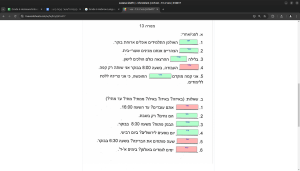.לשיעורי בית עשיתי וורדול
.למדתי מילים ששכחתי כמו מטוס וסדה תעופה
.לשיעורי בית עשיתי וורדול
.למדתי מילים ששכחתי כמו מטוס וסדה תעופה
My goal for grade 6 was to speak hebrew better and more comfortably. I had to practice and speak more at home and during class. During our unit about Jerusalem I learned new vocabulary words and that made it easier for me to speak. I also wanted to be more focused which made it easier to do tasks especially hebrew. I find it much easier to speak in hebrew now because I practiced and studied for the tests. There are some words that I need to use in a conversation that I didn’t know before. This was a good year and I learned a lot of hebrew.
.שיעורי בית עשיתי דף עבודה על פועלים בעבר
.למדתי איך לעשות פועלים בעבר
זה הדף עבודה

.סיימתי את שיעורי הבית שלי בעברית ועשיתי דף עבודה
.עשיתי דף עבודה כי שכחתי הספר שלי בבית ספר
זה דף העבודה שלי

Hello world it is me ethant36 today I will be talking about the responsibilities of becoming a Bar/Bat Mitzvah.
When you become Bar or Bat mitzvah, you become a Jewish adult. You have to become responsible for your actions, honor the old community members, honor your parents, not take revenge, not shame other people, help your neighbor in need, not talk badly about someone and give tzedakah to the poor. The religious responsibilities include
2. מצרים נכנעה כי ישראל השמידה את המטוסים של מצרים
3. סוריה ניסתה לנתק את המים של ישראל
4. ישראל כבשה את הר סינייה
.סיימתי את שיעורי הבית שלי בעברית ועשיתי דף עבודה
זה דף העבודה שלי
